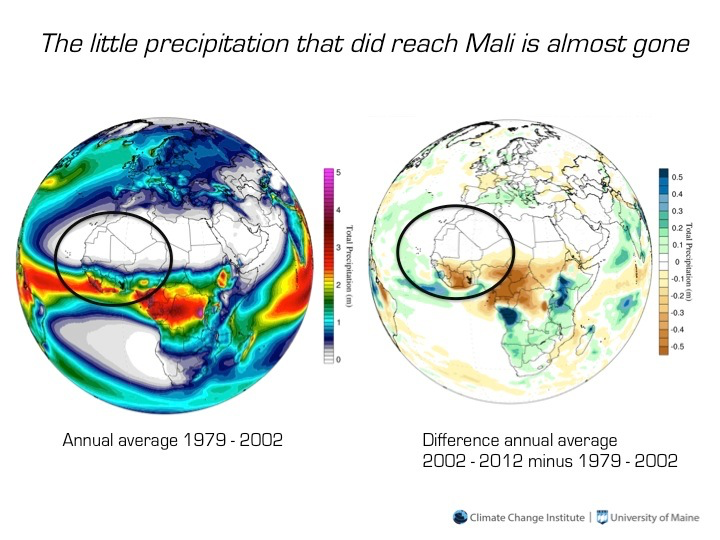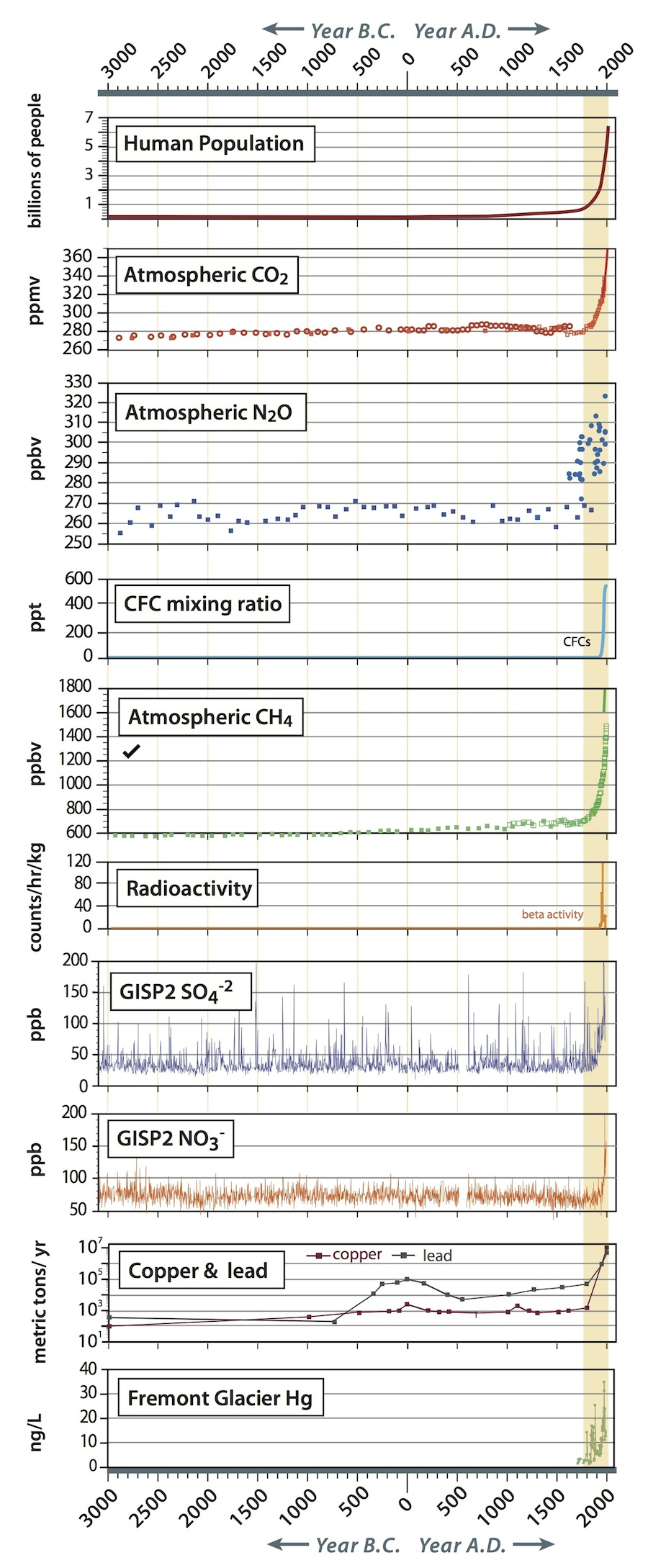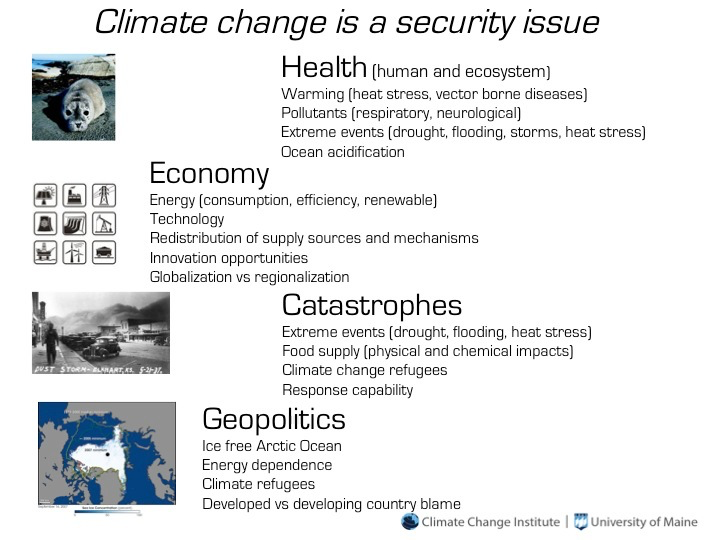|
by Paul Mayewski I recently had the pleasure of appearing in the last episode of the award-winning Years of Living Dangerously series produced by James Cameron, Arnold Schwarzenegger, David Gelber, and others. The host for our section, M. Sanjayan, and a film crew joined our expedition to Tupungatito in the central Andes where we recovered an ice core from close to 20,000 feet. You can see his write up of his experience with us here. We now know that a major result of greenhouse gas warming is changes in large and small scale wind patterns around the globe. The details of exactly when, where, and how much rain falls can have significant implications: Tom Friedman made the case that drought in Syria and surrounding regions played a significant role in the emergence of unrest that led to the Arab Spring. For many farmers around the world, even a small shift that takes rain away from their fields can mean the difference between a good life and becoming a refugee. The purpose of many of our expeditions, including this one, is to discover how increasing greenhouse gases and high-altitude ozone depletion are changing wind and precipitation patterns, allowing better predictions of how water, heat, and pollution are moved around the planet. Our Tupungatito study site, located at the northern edge of the Antarctic Westerlies, provides unique insights into these changes. Shifts in moisture bearing winds are not only leading to drought in the Middle East but also in Africa, Australia, and the western US. The politically unsettled west African country of Mali, home of 14 million people, has experienced significant drought in recent years. The northern two thirds of the country has seen severe drought for decades, while the lower third received enough to grow crops. But, in the last few years, this “wetter” lower third has lost more than half of its usual rainfall, leaving this landlocked country in a critical state. Understanding where, how deep, and how long drought will occur is essential to geopolitical, economic and most importantly humanitarian efforts.  The little precipitation that did reach Mali is almost gone. The map on the left shows average annual precipitation. Mali, circled, receives almost no water in the north and much more in the south. The right map shows the change in precipitation as the 2002 to 2012 average minus the 1979 to 2002 average. The amount of rain now reaching southern Mali is greatly reduced. Plotted using Climate Change Institute Climate Reanalyzer™ software. by Paul Mayewski
The vast majority of scientists understand the human origins of the rapid, recent rise in greenhouse gases. Even most of the skeptics accept that there has been a rise, debating only the cause and the consequences. But, if recent greenhouse gas rise is not caused by human activity then it is extremely odd that so many other undeniably human components of the atmosphere have also increased dramatically in the industrial era along with greenhouse gases. Ice cores offer robust records of how the atmosphere has changed over thousands and hundreds of thousands of years, and they have given us a detailed view of how it has changed with the advent of human industrialization. The illustration below, taken from the Climate Change Institute’s report on climate change prepared for the State of Maine, highlights the dramatic increases in an amazing range of chemicals over the last century. Though this figure only goes back 5,000 years, the recent, dramatic industrial rise still stands out over the last several million years. Why does any of this matter?
by Michael Morrison
We now know that the general term “climate change” includes many different aspects, from changes in rain and snowfall patterns, to local increases and decreases in temperature, and more. One of the discoveries we have made is that some aspects, like increased carbon dioxide levels, are long-lasting and others, like sulfur emissions, are removed from the air in a matter of a few years. One of the implications of these fast and slow changing pollutants is that the sooner we start on the long-lasting ones, like carbon dioxide, the easier it will be and the greater our success. But another implication is that there are changes we can make that will have an near-immediate effect, and offering a nice, instant-gratification hit in the process. Ground level ozone results when fossil fuel combustion products are exposed to sunlight. Without the combustion products, ozone does not form, and if combustion products are reduced, ozone drops off within days. Ground level ozone is very reactive worsening, and even causing, respiratory illnesses. It also damages plants. Sachin Ghude and colleagues just estimated the crop losses in India resulting from fossil-fuel fueled, ground level ozone. They estimate that 5.6 million tons—5.6 billion kilograms—of wheat and rice were lost from ozone damage in 2005; enough to feed about 94 million people. Just one of the many health, economic, and security costs of climate change, policies that reduce fossil fuel emissions would result in instant, significant, increases in crop yields in India. by Michael Morrison
Joe Romm claimed that the real name for carbon offsets is “carbon rip-offsets” because they are all rip-offs. But the high energy-to-weight and rapid-fueling requirements for aviation fuel means that there are currently no usable substitutes, and there is very little we can do to reduce the carbon emissions of flying other than to not fly. Isn’t there some way we can confidently mitigate our air travel emissions? Ultimately, a true offset will either put carbon back into the ground in a long-lasting form such as coal, oil, or charcoal; or it will reduce the amount of carbon that would otherwise have been dug-up and burned. The first is hard to do, and the second is hard to verify. But M. Sanjayan suggested an approach that makes good sense to me: giving away energy efficient lighting on his trips. The bulbs offset carbon by reducing the energy used to provide light, increasing what I call “energy performance”; providing the same energy services but with less energy. He suggested CFL’s, but LEDs are now in mainstream production and offer an even better solution. I wondered, how many LEDs would I have to buy and give away to offset a given flight? The amount of carbon dioxide produced in the generation of electricity varies around the world, but in the USA the EPA tells us we average about 0.55 kg per kWh. On a visit to my local hardware store this week, I found 60 watt replacement LEDs for $13. These use only 9.5 watts of electricity and produce the same light as a 60 watt incandescent bulb. They are rated to last 25,000 hours. We see that over 25,000 hours, a 60 watt bulb will use 1,500 kWh of electricity and the 9.5 watt LED will use 238; a difference of 1,262 kWh. Using the U.S. average of 0.55 kg per kWh, this means that replacing a 60 watt incandescent bulb with this LED will reduce electric power carbon dioxide emissions by 694 kg. How much carbon dioxide do I emit on a flight? Terrapass, a seller of “offsets”, provides a calculator to estimate this number. They indicate that for a Los Angeles / New York roundtrip, each passenger creates 873 kg of carbon dioxide emissions. It looks like I can offset my carbon emissions from a round-trip cross-country flight by buying and giving away two 9.5 watt, 60 watt replacement, LEDs to someone who will use them to replace incandescents. A significant virtue of this approach is that it is verifiable to me: I know I bought the bulbs; I know I gave them to someone who installed them; and I know they will reduce electric power consumption while providing the recipient with the same energy service (lighting) that they previously enjoyed and saving on electric bills in the bargain. I don’t have to worry about whether the offset company is honest, or how much of my donation is actually going towards an offset, or whether it is really an offset. And, as Sanjayan says, it’s a fun way to make friends at your destination. by Paul Mayewski
While some may choose to debate the importance of climate change, major businesses and the U.S. military consider greenhouse gas caused climate change a major security issue. The illustration below summarizes the broad range of security issues that can be attributed to rise in greenhouse gases and related pollutants. Share it. |


 RSS Feed
RSS Feed